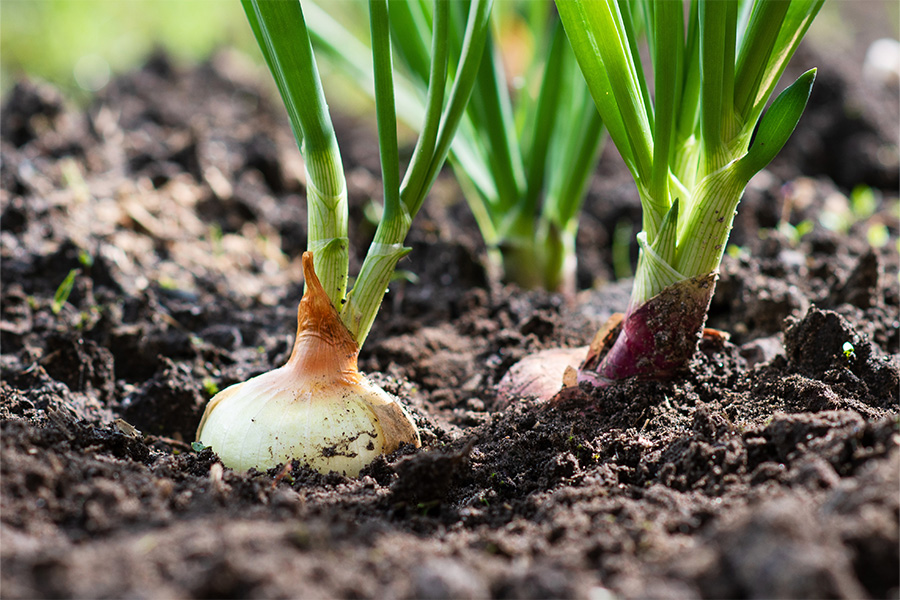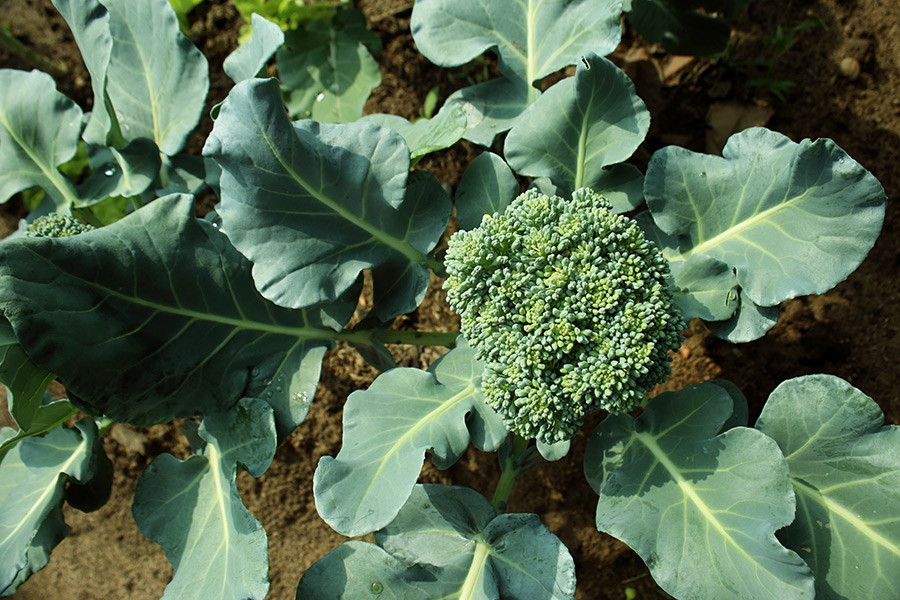Onions
-

This publication discusses organic Vidalia onion production in Georgia, from site selection and harvesting to certification.
George E. Boyhan and Timothy Coolong
|
-

Stubby-root nematodes, Paratrichodorus minor, are considered an important pest of onions in Georgia. Low to high population densities of this nematode were observed in multiple fields in the Vidalia area causing damage to sweet onions. The most obvious aboveground symptoms of stubby-root nematode nematode infection are poor, stunted growth of onion seedlings. Stubby-root nematodes have a wide host range, including sugar beets, potatoes, corn, cotton, peanuts, wheat, onions, grasses and some other vegetable crops that are commonly grown in Georgia. Fallow crop rotation with non-host cover crops and treating seedbeds with suitable fumigant and non-fumigant nematicides are effective controls for this pest.
Christopher Todd Tyson, Aubrey Shirley, and Abolfazl Hajihassani
|
-

B 1198
Onion Production Guide
This publication represents the latest information available on the commercial production of short-day onions in south Georgia.
David G Riley, George E. Boyhan, Stanley Culpepper, Esendugue Greg Fonsah, Alton N Sparks, Timothy Coolong, Bhabesh Dutta, and William C. Hurst
|
-

This is an annual report highlighting research conducted on Vidalia onions in recent years. Research topics include: variety trials, irrigation and fertilizer strategies, sulfur content in soils, effect of fertilizers on yield, thrips, factors affecting postharvest incidence of bacterial bulb rot, and Botrytis leaf blight.
Ted McAvoy, Christopher Todd Tyson, Luan Oliveira, and Daniel L. Jackson
|
-

Bacterial diseases are among the major production and economic challenges that onion growers face in Georgia. There are six bacterial diseases that commonly affect onion foliage and bulbs in the state. These diseases are difficult to manage and rely mainly on cultural practices and the use of protective bactericides. Host resistance is limited with little information on pathogen biology and the infection process. This bulletin provides a comprehensive outlook on specific symptoms associated with bacterial diseases, modes of infection and spread, and potential management options.
Bhabesh Dutta
|
-

This is an annual report highlighting research conducted during 2021 and 2022 for Vidalia onions. Research topics include: variety trials, irrigation and fertilizer strategies, sulfur content in soils, effect of fertilizers on yield, thrips, factors affecting postharvest incidence of bacterial bulb rot, and Botrytis leaf blight.
Timothy Coolong, Christopher Todd Tyson, Aubrey Shirley, and Ted McAvoy
|
-

C 1258
Fall Vegetable Gardening
This publication covers fall vegetable production including planting dates, spacing, general culture of cool-season vegetables planted in Georgia in the fall. Many people consider the end of summer to be the end of gardening season. However, there is a whole other world of vegetables that can be planted in the fall garden in Georgia. Temperatures are milder, and there generally are fewer insects and diseases to contend with when planting in the fall. Cool-season vegetables are ironically planted in the late-summer heat, but thrive as they mature during cooler temperatures as the season progresses. Whether you choose to plant only a cover crop or to try your hand at some cool-season vegetables, planting for the fall growing season will keep your garden productive all year long.
Bob Westerfield
|
-

This annual publication includes a report of 2019-20 onion research variety trials and Extension activity at the University of Georgia College of Agricultural and Environmental Sciences. The report contains the results of research awarded by the Vidalia Onion Commodity Commission.
Juan Carlos Diaz-Perez, Jason Lessl, Bhabesh Dutta, Andre Luiz Biscaia Ribeiro da Silva, and Angelos Deltsidis
|
-

This publication is a report of 2012-2014 onion research variety trials and Extension activity at the University of Georgia College of Agricultural and Environmental Sciences.
Timothy Coolong
|